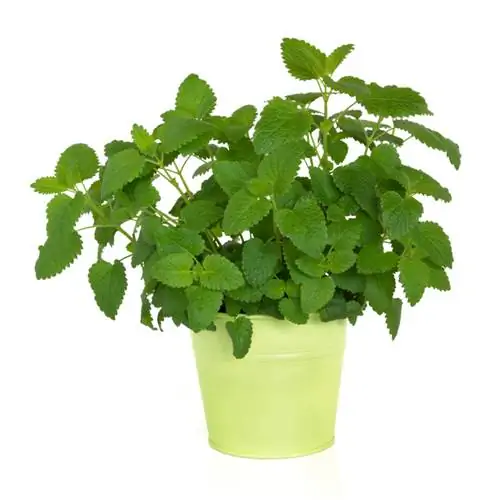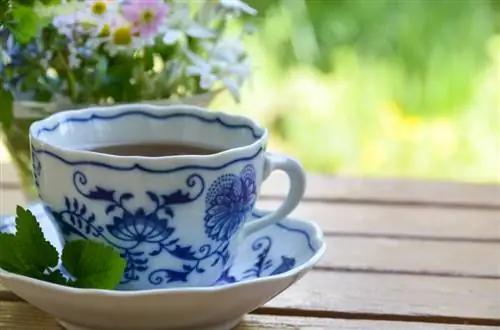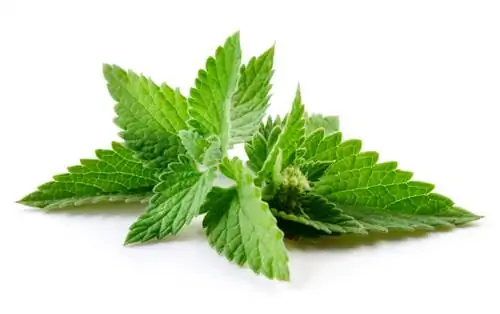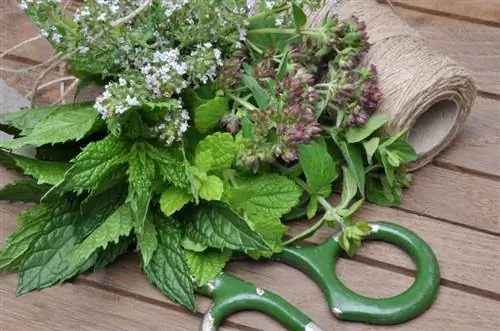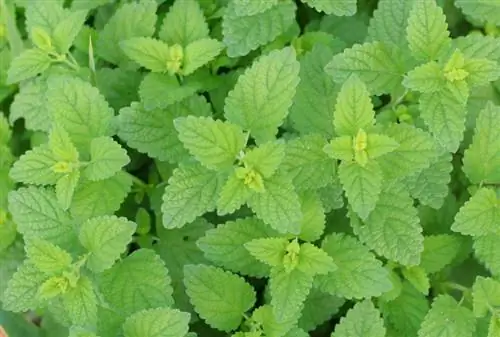- Author admin [email protected].
- Public 2023-12-16 16:46.
- Last modified 2025-01-23 11:20.
Green plants create a revitalizing and he althy climate in rooms. Lemon balm fits in seamlessly here because it is suitable as a houseplant. The following care instructions show how cultivation is very easy.
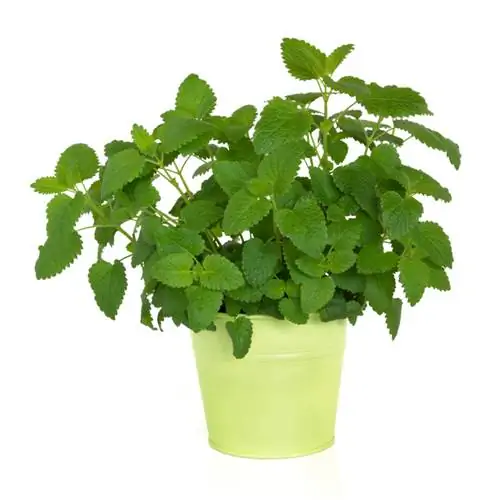
How do you care for lemon balm as a houseplant?
Lemon balm is suitable as a houseplant and prefers a sunny to partially shaded location. It is important to water regularly when the substrate surface has dried and to fertilize with liquid fertilizer for herbs during the growing season. Pruned, hardy houseplants can be cultivated all year round.
Which location does Melissa prefer in the room?
In terms of lighting conditions, lemon balm proves to be flexible as a houseplant. It thrives in both sunny and partially shaded locations. With its growth height of up to 60 centimeters, it carries its fresh green color into less bright niches of the room.
How should the water and nutrient supply be managed?
Since there is a lack of natural rainfall in the sheltered conditions behind glass, this aspect of care requires regular attention. How to do it right:
- Water lemon balm when the substrate surface has dried
- Empty water from the coaster after 20 minutes at the latest
- preferably use stale tap water at room temperature
A liquid fertilizer (€6.00 on Amazon) for herbs meets the nutrient requirements very well. Administer the preparation every 14 days from April to August. Water a little with clear water beforehand so that the fertilizer s alts do not damage the roots.
How to cut lemon balm?
If regular harvesting no longer keeps the vigorous lemon balm under control, bold pruning is possible without any problems. It is your individual decision whether you cut the plant back to 10 centimeters or only by a third. As long as at least 1 to 2 pairs of leaves remain on a lemon balm, it will sprout again reliably.
Are there any precautions to be taken for winter storage?
In the open field, the hardy lemon balm pulls in its above-ground parts of the plant in autumn. It will sprout again from the rhizome next spring. As a houseplant, there is nothing wrong with continuous cultivation according to these care instructions. Given the reduced light and temperature conditions, the need for irrigation water decreases proportionally. Fertilization is only done every 6-8 weeks.
Tips & Tricks
Hobby gardeners with limited time to care for their herbs simply put lemon balm in hydroponics. With this modern approach to keeping houseplants, the roots thrive in a mix of water and inorganic substrate, such as fired expanded clay. On average, watering is only done every 3-4 weeks and fertilization is carried out every 4 months.

